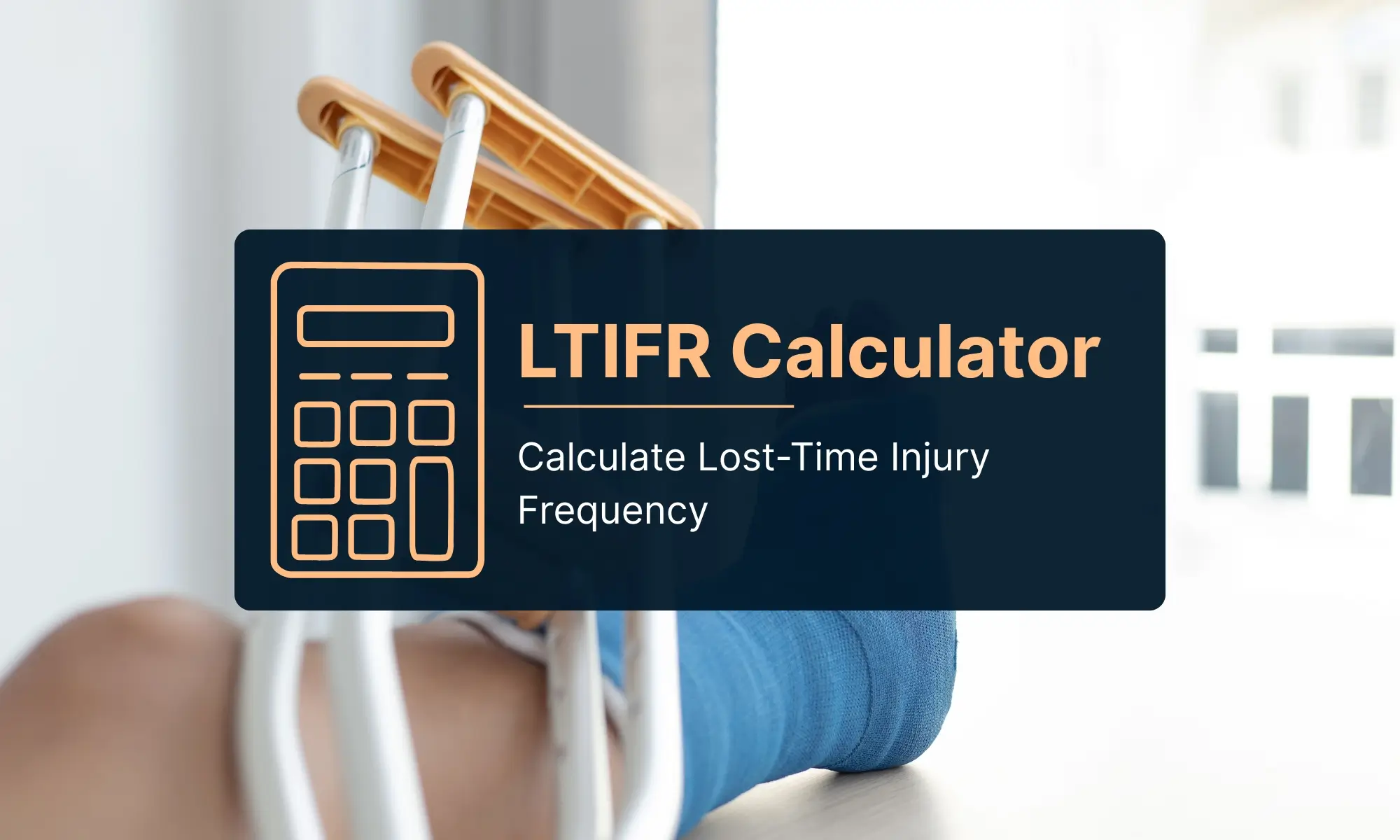What is LTIFR?
LTIFR (Lost-Time Injury Frequency Rate) is a standard safety metric used in occupational health and safety to measure the number of lost-time injuries per 1 million hours worked. It helps evaluate the effectiveness of an organization’s safety practices and compare performance across industries and sites.
LTIFR Calculator
LTIFR Formula
The formula for calculating LTIFR is:
Number of Lost Time Injuries (LTI) X 1,000,000 / Total Hours Worked
Where:
- Lost Time Injuries (LTI): Number of work-related incidents causing employees to miss at least one shift.
- Total Hours Worked: Combined work hours of all employees during the selected period.
Why Use This LTIFR Calculator?
This online LTIFR calculator simplifies computing your lost-time injury frequency rate. It’s quick, accurate, and ideal for:
- HSE professionals and safety officers
- Internal audits and safety compliance reports
- Construction, manufacturing, oil & gas, and other high-risk industries
Interpreting LTIFR Results
- A lower LTIFR indicates a safer workplace.
- A higher LTIFR may signal recurring safety issues and the need for improved hazard control.
Typical benchmarks vary by industry. Always compare against your sector’s average.
Tips for Accurate LTIFR Calculation
- Always use verified and complete injury data.
- Ensure total hours worked include all employees (full-time, part-time, contractors).
- Exclude non-recordable incidents like minor first aid cases.
Improve Your LTIFR Score
Reducing LTIFR involves:
- Conducting regular safety training
- Encouraging hazard reporting
- Investing in preventive equipment and controls
- Tracking near-misses alongside LTIs
LTIFR vs TRIFR
While LTIFR only includes injuries that result in time away from work, TRIFR (Total Recordable Injury Frequency Rate) consists of all recordable incidents, such as medical treatment cases and restricted work.

